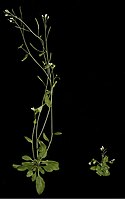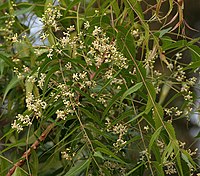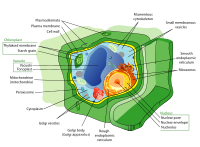
Engineering hydroxyproline‐O‐glycosylated biopolymers to reconstruct the plant cell wall for improved biomass processability
Sign Up to like & getrecommendations! Published in 2020 at "Biotechnology and Bioengineering"
DOI: 10.1002/bit.27266
Abstract: Reconstructing the chemical and structural characteristics of the plant cell wall represents a promising solution to overcoming lignocellulosic biomass recalcitrance to biochemical deconstruction. This study aims to leverage hydroxyproline (Hyp)‐O‐glycosylation, a process unique to plant… read more here.
Keywords: cell wall; plant cell; plant; hyp ... See more keywords

Development of a novel noninvasive quantitative method to monitor Siraitia grosvenorii cell growth and browning degree using an integrated computer‐aided vision technology and machine learning
Sign Up to like & getrecommendations! Published in 2021 at "Biotechnology and Bioengineering"
DOI: 10.1002/bit.27886
Abstract: The rapid, accurate and noninvasive detection of biomass and plant cell browning can provide timely feedback on cell growth in plant cell culture. In this study, Siraitia grosvenorii suspension cells were taken as an example,… read more here.
Keywords: siraitia grosvenorii; cell growth; aided vision; cell ... See more keywords

Analyzing Xyloglucan Endotransglycosylases by Incorporating Synthetic Oligosaccharides into Plant Cell Walls
Sign Up to like & getrecommendations! Published in 2018 at "ChemBioChem"
DOI: 10.1002/cbic.201700638
Abstract: The plant cell wall is a cellular exoskeleton consisting predominantly of a complex polysaccharide network that defines the shape of cells. During growth, this network can be loosened through the action of xyloglucan endotransglycosylases (XETs),… read more here.
Keywords: plant; xyloglucan endotransglycosylases; analyzing xyloglucan; synthetic oligosaccharides ... See more keywords

Production of biopesticide azadirachtin using plant cell and hairy root cultures
Sign Up to like & getrecommendations! Published in 2017 at "Engineering in Life Sciences"
DOI: 10.1002/elsc.201700012
Abstract: The extensive use of nondegradable chemical pesticides for pest management has developed serious environmental hazards. This has necessitated the urgent need to switch over to an alternative mode of biopesticide development for mass agriculture and… read more here.
Keywords: plant; azadirachtin; cell hairy; biopesticide azadirachtin ... See more keywords

Food ingredients and food made with plant cell and tissue cultures: State‐of‐the art and future trends
Sign Up to like & getrecommendations! Published in 2021 at "Engineering in Life Sciences"
DOI: 10.1002/elsc.202000077
Abstract: Climate change and an increasing world population means traditional farming methods may not be able to meet the anticipated growth in food demands. Therefore, alternative agricultural strategies should be considered. Here, plant cell and tissue… read more here.
Keywords: cell tissue; food; food ingredients; plant cell ... See more keywords

Recent applications of plant cell culture technology in cosmetics and foods
Sign Up to like & getrecommendations! Published in 2021 at "Engineering in Life Sciences"
DOI: 10.1002/elsc.202000078
Abstract: Plants have been used as the main source of phytochemicals with nutritional, medicinal, cultural and cosmetic applications since times immemorial. Nowadays, achieving sustainable development, global climate change, restricted access to fresh water, limited food supply… read more here.
Keywords: cell culture; plant cell; culture technology; plant ... See more keywords

Fluorescence Lifetime Imaging of Plant Cell Walls.
Sign Up to like & getrecommendations! Published in 2019 at "Methods in molecular biology"
DOI: 10.1007/978-1-4939-9469-4_5
Abstract: Fluorescence is a versatile property of many molecules called fluorophores. In plant cell walls, fluorescence is generally attributed to aromatic molecules such as lignin. In contrary to fluorescence intensity, fluorescence lifetime is independent from fluorophore… read more here.
Keywords: fluorescence; cell walls; fluorescence lifetime; cell ... See more keywords

Diverse role of γ-aminobutyric acid in dynamic plant cell responses
Sign Up to like & getrecommendations! Published in 2019 at "Plant Cell Reports"
DOI: 10.1007/s00299-019-02396-z
Abstract: Gamma-aminobutyric acid (GABA), a four-carbon non-protein amino acid, is found in most prokaryotic and eukaryotic organisms. Although, ample research into GABA has occurred in mammals as it is a major inhibitory neurotransmitter; in plants, a… read more here.
Keywords: plant; gaba; role; plant cell ... See more keywords

Role of tonoplast microdomains in plant cell protection against osmotic stress.
Sign Up to like & getrecommendations! Published in 2022 at "Planta"
DOI: 10.1007/s00425-021-03800-3
Abstract: MAIN CONCLUSION Variations in the content of tonoplast microdomains, isolated with the aid of a non-detergent technique, are induced by osmotic stress and may take part in plant cell adaptive mechanisms. Investigation of tonoplast microdomain… read more here.
Keywords: stress; tonoplast; plant cell; role ... See more keywords

A modular microfluidic bioreactor to investigate plant cell-cell interactions.
Sign Up to like & getrecommendations! Published in 2021 at "Protoplasma"
DOI: 10.1007/s00709-021-01650-0
Abstract: Plants produce a wide variety of secondary metabolites, which often are of interest to pharmaceutical and nutraceutical industry. Plant-cell cultures allow producing these metabolites in a standardised manner, independently from various biotic and abiotic factors… read more here.
Keywords: cell interactions; cell; plant; microfluidic bioreactor ... See more keywords

Characterization of ionic liquid pretreated plant cell wall for improved enzymatic digestibility.
Sign Up to like & getrecommendations! Published in 2018 at "Bioresource technology"
DOI: 10.1016/j.biortech.2017.09.202
Abstract: An insight into the properties of cell wall of mustard stalk (MS) pretreated by five ionic liquids (ILs) revealed ILs interaction with cellulose, hemicellulose and lignin components. Differential Scanning Calorimetry (DSC) showed increased pore size… read more here.
Keywords: ionic liquid; pretreated plant; characterization ionic; cell wall ... See more keywords